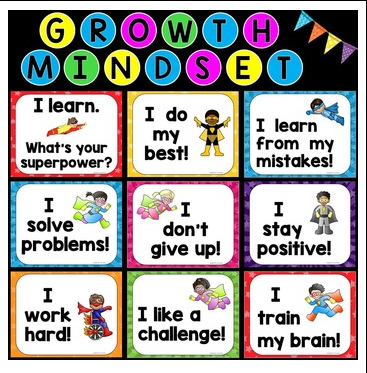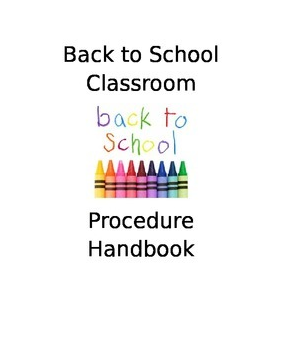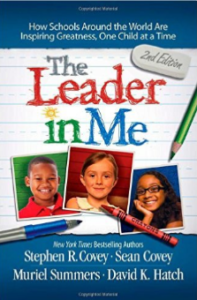Are you struggling with an unruly class? Do you have a well-behaved class with the exception of a few students? Have you tried every classroom behavior strategy under the sun in hopes that your class runs like a well-oiled machine, but still need help with a select few? Everyone knows that teachers don’t get to choose their students. Even the most seasoned teachers who have years of experience with classroom management, run into those students who don’t respond to their classroom management system. In my research, I have found multiple researched-based classroom behavior strategies that I would like to share. This post is based on following the MTSS or RTI system of tiered supports guidelines.
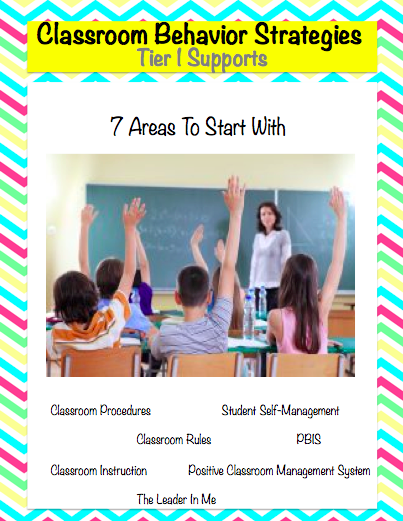
What does a three-tiered model for instruction involve?
A three-tiered model for instruction and intervention is based on the principle that academic and behavioral supports are first provided at a core or universal level to effectively address the needs of all students in a school (referred to as Tier 1). However, not all students will respond to the same curricula and teaching strategies. As a result, some students with identified needs receive supplemental or targeted instruction and intervention at Tier 2. Finally, at Tier 3, a few students with the most severe needs receive intensive and individualized behavioral and/or academic support.
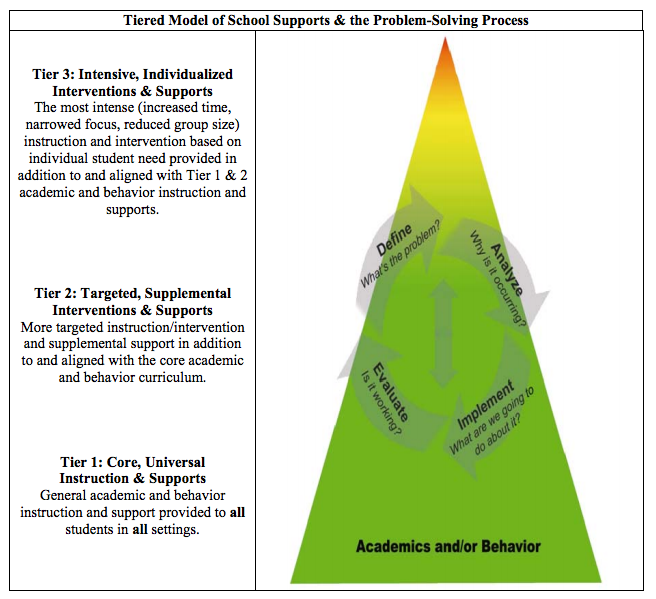
Classroom Management:
The term classroom management is confusing and misleading, mainly because it has no clear and widely agreed-upon definition. For some, the term refers to general control of students; for others, it refers to discipline procedures; for others still, it refers to both routines and procedures. Classroom management is about building relationships with students and teaching social skills along with academic skills.
There are two aspects of an effective learning environment (and, by extension, successful classroom management):
- relationships (specifically, the range of interpersonal skills necessary to maintain healthy relationships)
- high-quality instruction (characteristics of effective instruction)
When students have strong, trusting relationships both with the adults in the school and with their peers, and when their lessons are interesting and relevant, it’s harder for them to misbehave. We don’t expect an effective classroom management system to eliminate all problematic behavior any more than we expect a new set of standards to raise all students’ scores by leaps and bounds on the first try. Students are going to misbehave as they learn and grow—it’s how we respond to their misbehavior that matters. We believe that students should have a chance to learn from their mistakes and to restore any damaged relationships with others. Check out Growth Mindset Pinterest board that I currently follow for more ideas.
Get these posters free here
Students Have Individual Needs:
All students have individual needs. Some students’ needs are easy to recognize. They may have visible disabilities where they require the use of a wheelchair or may need to wear glasses, braces on their limbs…. Other students may have invisible disabilities such as ADHD, learning disabilities, emotional issues, anxiety, oppositional defiant disorder or….. they may come from homes where violence, drugs, lack of food are an everyday occurrence or a mixture of all of the above.
7 Areas To Start With:
- What procedures do you have in place? Did you directly teach them? Do you practice procedures regularly?
- Do you have a set of classroom rules? Did the students help create them?
- Do you have a visual positive classroom behavior management system that anyone could run (including a substitute)?
- Are students involved in self-management? Do they keep track of their own behavior?
- Is your classroom behavior management system positive or punitive? What is your classroom culture like?
- What does instruction look like? Are students sitting for long periods of time? Is it engaging?
- What is your district’s expectations, mission, vision? Are you a PBIS (Positive Behavior Intervention and Support) school?
(1) Classroom Procedures:
The secret to warding off at least some behavior problems is establishing positive classroom procedures for daily tasks and activities. Your students will appreciate your consistency, and once they have internalized classroom procedures, the day will run that much more smoothly. Classroom procedures should be taught at the beginning of the school year and consistently practiced throughout the remainder of the year. One HUGE mistake a lot of teachers make is to teach them the first week of school, but never refer back to them, or expect the students to follow them without directly practicing them together.
Never Assume!
Another mistake teachers make is assume that older students “should already know” certain expectations. NEVER assume they already know any procedure. Procedures change from teacher to teacher, classroom to classroom, grade level to grade level and building to building. I am currently in a coaching cycle with one of our elementary guidance couselors. She is helping a new 1st-grade teacher who was just hired in January (I know, not an ideal time to start with a new classroom, but was best for kids) with getting her classroom procedures set up. Although these students have been in 1st grade since August, they are now in a new classroom, with a new teacher (literally) and a new group of classmates. We are using Interactive Modeling from the Responsive Classroom training that she attended. Interactive Modeling is a great way to teach and practice classroom procedures, even with older students.
Directly Teach Procedures
Below is a list of general procedures that you should consider directly teaching at the beginning of the school year (and practice them throughout the year).
- Entering and exiting the classroom
- Lining up (ABC order? Youngest to oldest? Tallest to shortest? Will this change from day to day?)
- Walking in the hallway (I like to use hips and lips with younger students)
- Getting the teacher’s attention (signals)
- Getting out, putting away supplies
- Participating in group lessons, working with a partner, working independently…
- Obtaining help with assignments
- What to do with finished work/ what to do when you are finished
- When and how to use the drinking fountain, water bottles, bathrooms
- Classroom jobs/rules/expectations
- Using the classroom library
- Inside recess equipment and expectations
- Pledge, fire drill, tornado drill
- Signals for obtaining attention
Communicate Procedures:
I always started my year off (at open house with the parents) and the first week with the students directly teaching all of my procedures. I created a procedural handbook that each student kept in their desk. We would also refer back to it if we forgot a certain procedure. I also incorporated tons of get to know you activities and team building activities. Yes, your students may already know each other, but chances are, there are students in your classroom that have never been in the same classroom together (unless you only have 1 or 2 sections). Even so, there probably hasn’t been the same exact mix of students in any given grade previous to yours. This is a great classroom behavior strategy to start with. It sounds simple, but is a necessary process in improving classroom behaviors.
Get your copy here
(2) Classroom Rules:
This one seems like a no brainer, but trust me, it is skipped way to often. Classroom rules play a vital role in effective classroom management. They are great classroom behavior strategies used to start your year out right. However, rules alone exert little influence over student behavior. Too often, rules are posted at the beginning of the year, briefly reviewed once, and then attended to minimally. When this is the case, they have little to no effect on student behavior. There are several rules for rule setting that, when followed, help create orderly, productive classrooms that teach appropriate social skills along with the academic curriculum. To be more effective, our classrooms should have four-to-six rules that could govern most classroom situations. Too many rules can make it difficult for students to comply and for teachers to enforce.
Create Rules With Students
When students play an active role, they begin to learn the rules, and they are more inclined to have rule ownership. The rules become their rules, not our rules. To include students, conduct several short rule-setting meetings the first few days of school. For these meetings to be effective, we need to share with our students the rule-making guidelines (e.g., the rules need to be stated positively, they have to be observable and measurable, consequences need to be realistic).
With guidelines in place, students often select rules similar to the ones we would have selected. Without guidelines, students are inclined to make too many rules, make rules that are too stringent, and make those that are not specific enough. Classroom rules should be simple, specific, clear, and measurable. The degree of rule simplicity depends on the age and ability levels of our students. For younger students, we may want to include pictures in the rule posters.
Keep Rules Specific & Positive
Rules are specific when they are clear and unambiguous. For example, the rule “bring books, paper, and pencils to class” is much clearer than the rule “be ready to learn.” Clearly stated rules are easily observed and measured. The classroom rules should be posted and referred to regularly. Students should be “caught” (recognized positively) for following the rules. We consistently need to carry out the consequences and noncompliance of our classroom rules or they will mean very little. If our students follow the rules for group work at the learning center, we should verbally praise them and provide additional reinforcement as needed (e.g., stickers, extra free time). Below is an example of positive classroom rules. These are pre-made. I would suggest having your students help you come up with your own set of positive rules that are personalized to your classroom.
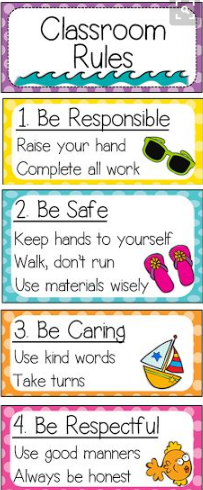
Be Consistent!
Students are often given mixed signals as to what is expected and what will happen if they do not meet these expectations. Inconsistent expectations cause student confusion and frustration. Inconsistent consequences maintain misbehaviors and can even cause the behavior to occur more frequently or intensely. In addition, we find ourselves constantly reminding and threatening which, in turn, enhances our frustration.
Expectations are clear when they are identifiable and consistent. Reviewing expectations and rehearsing rules help build routines and minimize the potential for problems. We can do this by asking our students to read the expectations prior to each activity. When we have temporary expectation changes (e.g., changes in rules due to a guest being present or special school event), we must inform our students.
Whole Brain Teaching:
For rule compliance, positive consequences should be applied continuously at first (every time the student is appropriate) and then intermittently (every so often). For example, if “following teacher’s directions” is the classroom rule, then we should provide some form of positive consequence, perhaps praising the students for following directions quickly and appropriately. At first, praise should be delivered each time the student follows teacher directions.

Once the teacher establishes the behavior (in this case, following teacher directions), we can move to an intermittent praise schedule. On the other hand, negative consequences (punishment procedures) are most effective when applied continuously. Of course, to effectively deal with this verbal aggression, we also need to implement additional pre-corrective methods, such as teaching appropriate expressions of anger, peer mediation, prompting and providing praise for socially, appropriate interactions. Check out Whole Brain Teaching For Challenging Kids. Check out my whole brain teaching Pinterest board for more ideas.
Get it here
Keep Rules Positive!
Another characteristic of effective rules is that they are stated positively. Positively stated rules are “do” rules. Do rules provide information as to how to behave and set the occasion for teacher praise. An example is “Raise your hand for permission to talk.” Conversely, negatively stated rules or “don’t” rules tell students what not to do and encourage us to attend to student rule breaking. An example of a don’t rule is “Don’t call out.” Don’t rules have been proven to be ineffective.
(3) Positive Classroom Management System:
Frequently, the question is asked, “Why should I have to teach kids to be good? They already know what they are supposed to do. Every student needs to learn how to comply. Why can I not just expect good behavior?” In the infamous words of a TV personality, “How is that working out for you?”

Why do we punish students by meting out “consequences” when they misbehave? Probably because we experienced punishment as students ourselves. The most common punishment for student misbehavior in elementary school is loss of recess—ironic, given that evidence has shown regular physical activity to reduce problematic behavior and increase student achievement. Another common punishment: placing students’ names on a board and applying checkmarks by those of students who’ve misbehaved. Such attempts to hold students publicly accountable for their behavior can render them compliant but can also make them feel anger, humiliation, and a range of other negative emotions that serve to shut down learning.
Don’t Single Kids Out!
Taking things away from students in the name of improving their behavior and learning can actually do the exact opposite. Can you imagine if we did the same in an attempt to improve faculty behavior? Teachers are infamously known to make the worst students. What if you had to stay 10 minutes after work because you talked during a staff meeting? What if your name were singled out on a chart for turning your grades in late? Consider the range of emotions these actions would evoke in you—and realize that children feel these emotions, too.

Just as students need teachers to teach them grammar and math, they need us to teach them how to respond properly to events. They need us to teach them socially appropriate behavior throughout the grade levels. Students need direct social skills instruction.
Children who are habitually criticized, humiliated, or shamed internalize negative feelings about themselves that hinder their healthy development. By contrast, children accustomed to loving support and guidance are much more likely to become healthy and productive citizens.
I lOVE to use books by Julia Cook. I have also used this AMAZING anger management book to help give students strategies when they get angry.
Greet all of your students as they enter your classroom.
I have recently found an amazing video where a teacher has a “secret handshake” with each student. What a great way to make each and every child feel special and build trust! Seriously….. this guy is a rockstar!!!
Morning Meetings are a great place to start. Start your day off on a positive note. Gather your students on the carpet, and get to know them. This is a great time to directly teach social skills and leadership qualities throughout the school year.
Visual Positive classroom management systems: (Researched based)
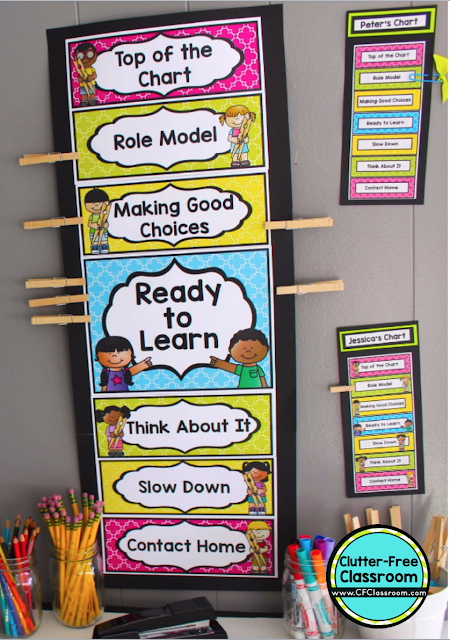
Clip Charts
Clip charts: The clip chart is a great classroom behavior strategy that consists of a chart that has been divided into levels. All of the children start the day on Ready to Learn. Then, during the course of the day, the children move their clothespins up or down the chart, based on the behavioral choices they make. If they are making good choices, they can move their clothespin up a level at a time. Inappropriate behavior would cause them to move down a level. Since the children start in the middle of the chart, they have numerous opportunities to work their way up the chart. This really helps the children realize that they have to have self-control and be responsible for their actions and behavior if they want to be recognized for making good choices.
Making it to the top of the chart is not easy, but it is definitely attainable. My students even had the chance to clip off the charts with good behavior. They would have 3 extra off the chart with positive behavior opportunities. I started at the bottom of my skirt (or pants). I would literally clip their clips to the bottom of my clothing. They could work their way up.
The next level would be clipped to the bottom of my shirt with the final level clipping into my hair. I know it sounds corny and a bit goofy, but it was really motivating for my students to see their clothespin in my hair:) At the end of each day, the children document what color they go home on so their parents are aware. I used a baseball theme recording sheet to follow my classroom sports theme. It worked great for most of my 3rd graders (all but 1 student). The one student that it didn’t work for I had to come up with additional behavior strategies/interventions for him (Tier 2). See my next post for ideas of more intensive strategies/interventions that I used with him.
Classroom Economy
My Classroom Economy is another great classroom behavior strategy program that enables any educator to teach children financial responsibility through fun, experiential learning. I based mine after Beth Newingham’s classroom economy system. I am currently in a coaching cycle with an 8th-grade math class implementing a classroom economy fit for middle school students. I used this site to get started. There are multiple videos by Thom Gibson that I also used to help get the 8th-grade classroom economy system started. Check these out if you are interested in using this system, they were a lifesaver! Check out my post on how I run my classroom economy here.

(4) Student Self-Management:
Managing classroom behavior may be more challenging today than ever before but is a classroom behavior strategy that is routinely overlooked. Many teachers face larger class sizes, more students who come from stressful, chaotic homes, and increased diversity in students’ abilities and cultures. Yet, many of us are determined to manage classroom behavior ourselves. After all, collaborating with others takes time and energy to build rapport and come to a consensus on behavior-change priorities and strategies. It’s tempting just to forge ahead. Although, going at it alone may seem like a good idea in the short-run, in the long-run, we are more likely to burn out and lose our effectiveness.
Let Others Help!
Fortunately, there are many others who can assist in our behavior management efforts, including students, their peers, fellow teachers, instructional coaches, behavior interventionists, guidance counselors, administrators, parents, and other school personnel, which can be invaluable resources. We should seek out their assistance when needed for support, guidance, and additional strategies.
Use Self-Monitoring
One effective way to include students in their own behavior change programs is the use of self-monitoring. With self-monitoring, a student helps regulate his or her own behavior by recording its occurrence on a self-monitoring form. To help ensure accuracy of self-monitoring, we should occasionally collect the data ourselves and compare our recordings with those of our student. If our student accurately self-monitored, we should reinforce his or her accuracy. In addition, we should hold brief, occasional student-teacher conferences to review the student’s progress.
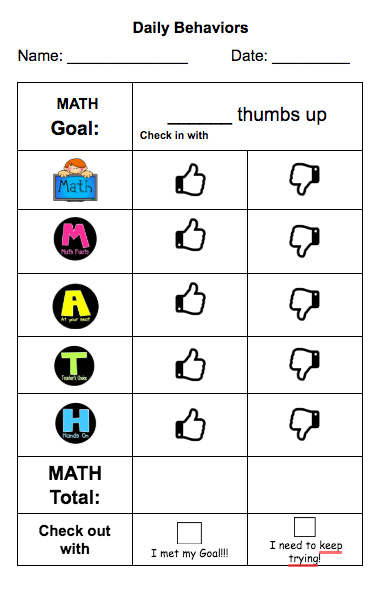
Check out self-monitoring ideas from this amazing blog called Notes From The Portable.
(5) Classroom Instruction:
There is a direct link between our lessons and student misbehavior. Perhaps our lesson is too easy or difficult, ineffective, or nonstimulating, which can lead to student misbehavior. The first line of defense in managing student behavior is effective instruction. We are teaching 21st-century learners. As teachers, we need to become 21st-century teachers.
Differentiate
As our students needs change, so should our approach in teaching them. We need to move away from the “one size fits all approach” (that most of us grew up with) where every student is involved in “sit and get” lessons. Good teachers have always known this and research supports this notion. When teachers differentiate learning, achievement and behavior improve dramatically. Planning for and responding to variances among learners creates the best learning experience possible. It includes processes to determine the effectiveness of instruction, the use of data to guide instructional decision-making, and it ensures access to success for all students.
Check out my coaching cycle video for best practices:
Use Data To Drive Instruction
Data should “drive” instruction. In order to truly differentiate to improve motivation and time on task student engagement, pre-assessments are a necessity. Standards should be identified, unpacked and repacked. Data from the pre-assessment should be used to differentiate instruction. Pre-assessments are not just for comparing growth to the post-assessment anymore. If a student scores 100% on the pre-assessment should they be required to sit through the lesson? This is an area where I have found most teachers struggle with. Yes, it’s easier for the teacher to make them sit through the lesson, but is it what is best for students?
Change Your Mindset
Would you be ok with your child sitting through lessons they already know about? Is this really the best use of their time? As teachers, we need to change our mindset to what is best for the students, not what is easiest for the teacher. What about those students who score 0%? The students who have no background knowledge and are missing pre-requisite skills? Students who could benefit from pre-teaching of the skill. This is typically where a lot of misbehavior occurs. Students who already know the skill or truly have no clue are usually the ones who tend misbehave the most.

Limit Worksheets!!!
Just because the worksheet comes with the basal doesn’t mean they have to be used. I have been in so many classrooms where worksheets are the main method of student practice. Teachers are overwhelmed with the amount of correcting they have to do and students are bored out of their minds! Think about it. Would you like to sit for hours filling out worksheets? Would you want your child doing this? It’s time to bring the “art of teaching” back, aka, bring the FUN back! I have spoken to so many teachers who feel like they are creating little robots. This is due to the pressures teachers face on a daily basis. The amount of testing, behavior problems, lack of time and large class sizes all play a part in our teaching techniques. Most teachers go into teaching with passion, creativity and the promise of making a difference in children’s lives. Somewhere along the way, some teachers lose that spark and forget about the art of teaching. Let’s face it, the pressures will always be there. But, they don’t need to stop you from your passion.
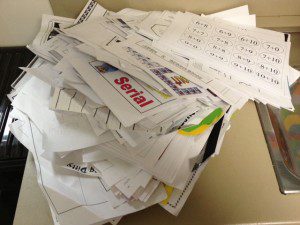
Bring The Fun Back Ideas: (to use with any age student)
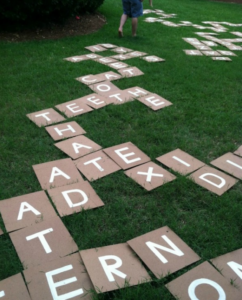

- Instead of round-robin reading, have your students act the story out.
- Create a giant Scrabble type game for students to practice their spelling/vocabulary words.
- In writing stories, paragraphs, questions, solving story problems, let the students have a snowball fight. Instruct students to write their first sentence, essential question, introduction to their story on white paper. Tell them to crumple their papers into a ball. These will be their snowballs. Students will throw the snowballs at each other (give them set rules before you start: no head or eye shots) for a selected time frame. After the timer goes off, the students will open up the snowball that they pick up and complete the problem, write a few lines of the story or paragraph or ask a question about the essential question.
- Practice math facts with an Easter Egg hunt (you can do this really with any math facts/problems). Place the numbers to be practiced on both sides of the plastic egg. I always placed a small little treat (a skittle, M&M, sticker…) inside each egg that the students could only earn with the correct answer. Differentiate by placing larger and smaller numbers on each egg. Have some students add (if that’s the targeted skill) while others multiply. I always hid a few golden eggs that when found could be turned in for a surprise (extra recess or individual item like a stuffed animal or a pack of gum…) Give each student an egg carton and a # of eggs to collect. Hide the eggs around the school. This does not need to wait until spring. I have used this in the winter, fall, and spring. This also makes a great center. Place all eggs in a basket with the answers on a piece of paper inside each egg for a self-checking device. Write answers in the bottom of the egg carton for each egg. Have the students match the eggs to the correct space in the carton.
(6)PBIS:
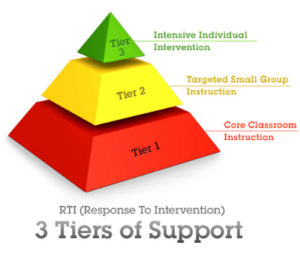
In the past, schoolwide discipline has focused mainly on reacting to specific student misbehavior by implementing punishment-based strategies including reprimands, loss of privileges, office referrals, suspensions, and expulsions. Research has shown that the implementation of punishment, especially when it is used inconsistently and in the absence of other positive strategies, is ineffective. Introducing, modeling, and reinforcing positive social behavior is an important step of a student’s educational experience. Teaching behavioral expectations and rewarding students for following them is a much more positive approach than waiting for misbehavior to occur before responding. The purpose of schoolwide PBIS is to establish a climate in which appropriate behavior is the norm. The schoolwide PBIS process emphasizes the creation of systems that support the adoption and durable implementation of evidence-based practices and procedures, and fit within on-going school reform efforts. An interactive approach that includes opportunities to correct and improve four key elements is used in schoolwide PBIS focusing on: 1) Outcomes, 2) Data, 3) Practices, and 4) Systems.
- Tier 1 supports (universal)
- Tier 2 supports (targeted group)
- Tier 3 supports (individual)
Systems of support improve lifestyle results (personal, health, social, family, work, recreation) for all children and youth by making targeted behaviors less effective, efficient, and relevant, and desired behavior more functional.
Every Student Is A Leader:
One amazing program and book that I am currently looking into is called The Leader In Me Program. The Leader in Me is Franklin Covey’s whole school transformation process. It teaches 21st-century leadership and life skills to students and creates a culture of student empowerment based on the idea that every child can be a leader. I work primarily with elementary aged students, so I have been looking into The 7 Habits Of Happy Kids. This system fits amazingly with our schools PBIS framework. There is a leadership curriculum for every age of students. The 7 Habits of Highly Effective Teens (great for middle school aged kids). And The 7 Habits Of Highly Effective People, which is geared towards high school-aged students. Instead of seeing children through the lens of a normal distribution curve—some kids are naturally smart and others are not—The Leader in Me paradigm sees that every child is capable, every child is a leader. This paradigm changes everything. Check out my 7 Habits Pinterest Board for more ideas.
To Learn More Click here
For more strategies and details on how to deal with the students who don’t respond to ideas in this post, stay tuned for more specific strategies and interventions.
